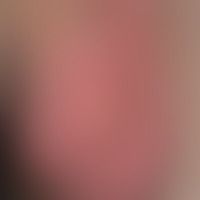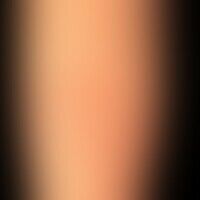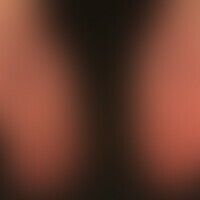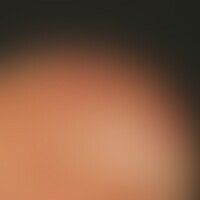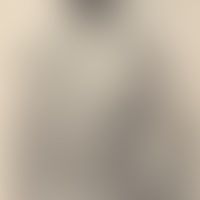Image diagnoses for "Plaque (raised surface > 1cm)"
560 results with 2840 images
Results forPlaque (raised surface > 1cm)
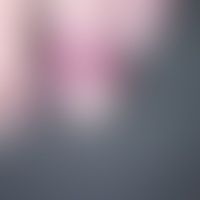
Acute paronychia L03.0
Acute paronychia: with sharply limited red, only moderately painful swelling; laterally flaccid pustular formation.

Mycosis fungoides C84.0
Mycosis fungoides: tumor stage. 53-year-old man with multiple, disseminated, 1.0-5.0 cm large, in places also large, moderately itchy, clearly consistency increased, red, rough plaques.

Psoriasis palmaris et plantaris (overview) L40.3
Psoriasis palmaris et plantaris: Plaque typewith dyshidrotic vesicles (detailed picture). 22-year-old woman shows sharply defined, red, rough plaque with multiple, smaller itchy vesicles (no pustules) and scaling.

Dermatitis contact allergic L23.0
Dermatitis contactallergic. typical for the allergic pathogenesis of eczema is the blurred, scattering limitation of the inflammatory zone.
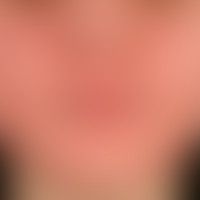
Psoriasis (Übersicht) L40.-
Psoriasis seborrheic type: Psoriasis with little sharply defined, flat, barely elevated, therapy-resistant, scaly plaques.
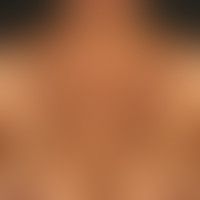
Amyloidosis macular cutaneous E85.4
Amyloidosis macular cutaneous: Apparently UV-intensified brown-black spot and plaque formation in the breast area. unexposed areas less affected.

Eosinophilic cellulitis L98.3
Cellulitis, eosinophilic. early phase: Clear pruritus and dolent burning for several days. The differently sized erythema and rich red smooth plaques shown here have existed for 2 days.
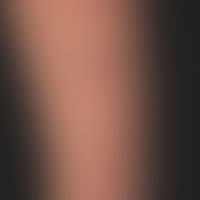
Nontuberculous Mycobacterioses (overview) A31.9
Mycobacteriosis, atpic. lymphatic (sporotrichoid) spread of painless red nodules.
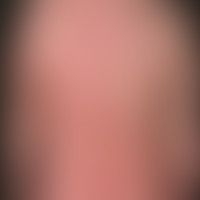
Atopic dermatitis (overview) L20.-
Eczema atopic (overview): severe, universal (erythrodermic) atopic eczema. exacerbation phase since about 3 months. patient with rhinitis and conjunctivitis in pollinosis. total IgE >1.000IU.
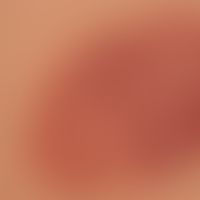
Infant haemangioma (overview) D18.01
Infant hemangioma (series: findings after 2 years): No therapy, extensive regression of the node.
Remark: In the meantime the hemangioma is completely healed (except for some telangiectasias).
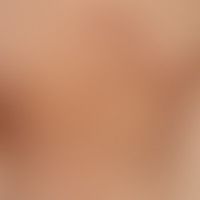
Circumscribed scleroderma L94.0
scleroderma circumscripts (plaque type). large, map-like bizarrely limited, brown, smooth plaques. no recognizable inflammatory symptoms. there is no feeling of tension. no pain. comment: apparently largely aphlegmatic (healed) scleroderma.
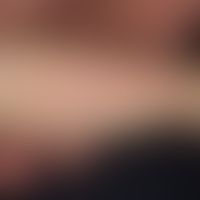
Ilven Q82.5
ILVEN: Acquired psoriasiform blaschko-linear inflammatory dermatosis, partly flat and partly linearly arranged, moderate itching.
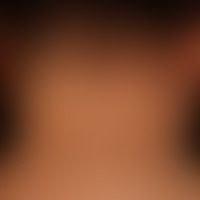
Hair dyes
Acute allergic contact dermatitis: acute recurrence (1 year later) after re-dyeing of the hair with a hair dye containing para-phenylenediamine.
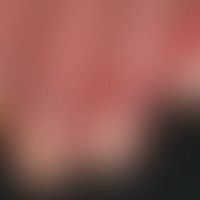
Lupus erythematosus (overview) L93.-
Lupus erythematosus so-called chilbalin lupus: recurrent course for years; bluish-livid, painful plaques reminiscent of frostbite (chilblain).
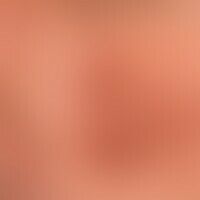
Facial granuloma L92.2
Granuloma faciale: Red-brown, blurred and irregularly configured, symptomless plaque in a 52-year-old man. Clearly pronounced follicle accentuation. No known secondary diseases, no medication anmnesia. The finding has existed for several months and is slowly progressive. Detailed picture of multiple plaques in the face.
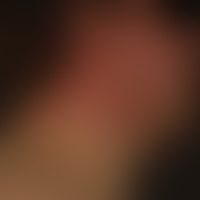
Airborne contact dermatitis L23.8
Airborne Contact Dermatitis: Acute, massively itching and burning dermatitis, which is limited to the freely carried skin areas, the lower border only blurred (leaking eczema foci), a typical feature of contact allergic eczema.
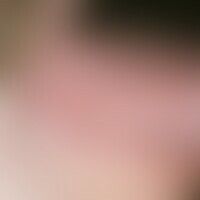
Oral hair leukoplakia K13.3
Hair leukoplakia orale. "Classic finding" with flat white plaques in the area of the lateral edge of the tongue in HIV-infected persons. The surface of the tongue is also "leukoplaked".

Dermatomyositis (overview) M33.-
Dermatomyositis. Gottron papules in a 72-year-old woman. Smaller, striated, reddish-livid papules appear, which confluent in the region of the end phalanges to form flat plaques. Strongly pronounced nail fold capillaries on dig. III and V. The Keining sign was strongly positive in the clinical examination.
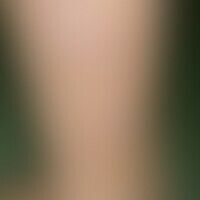
Hypertrophic Lichen planus L43.81
Lichen planus verrucosus. numerous, chronically stationary, 1-4.0 cm in size, rough, brownish or brownish-red, rough, wart-like plaques as well as severe itching. scarring after healing
